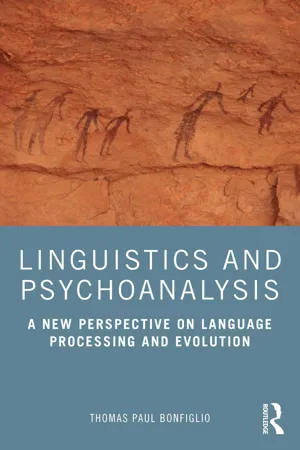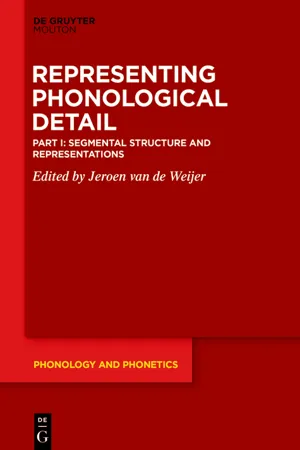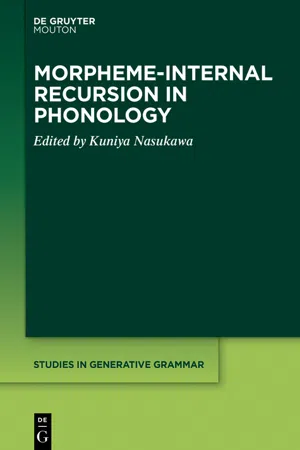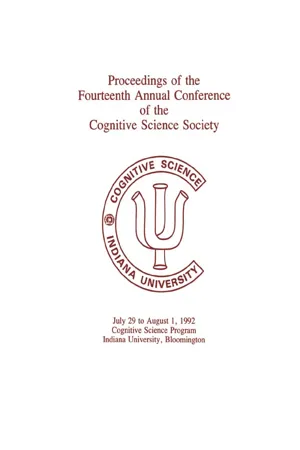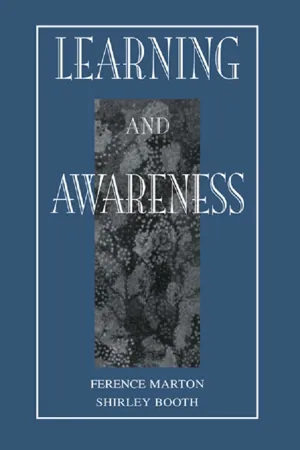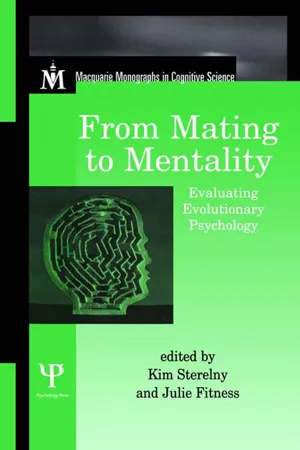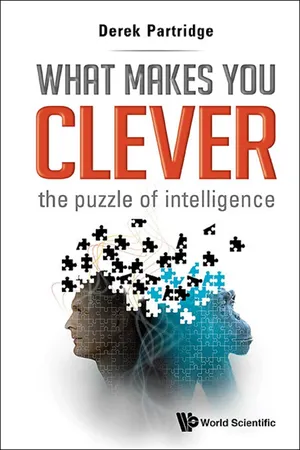Languages & Linguistics
Recursion
Recursion refers to the linguistic phenomenon where a word or phrase is repeated within a clause or sentence. This repetition can occur in various forms, such as embedding a clause within another clause or using a word within its own definition. Recursion is a fundamental aspect of human language and is found in various languages around the world.
Written by Perlego with AI-assistance
Related key terms
7 Key excerpts on "Recursion"
- eBook - ePub
Linguistics and Psychoanalysis
A New Perspective on Language Processing and Evolution
- Thomas Paul Bonfiglio(Author)
- 2023(Publication Date)
- Routledge(Publisher)
2 Recursion and metacognitionDOI: 10.4324/9781003180197-3One of the central concepts in the attempt to define human language pivots around the concept of Recursion. In linguistics, Recursion refers to the phenomenon of imbedding syntactic parts within other syntactic parts, as in the case of relative clauses, e.g.: “The cat that ate the bird that ate the worm that ate…”, which, in theory, could continue indefinitely. In the minimalist program of universal grammar, Recursion is seen as the nuclear faculty that generates the universe of linguistic possibilities, an atomic algorithm of infinite potential.In 2002, Hauser, Chomsky, and Fitch published “The Faculty of Language: What Is It, Who Has It, and How Did It Evolve”?, in which they reduce human language to a “narrow language faculty” that “only includes Recursion and is the only uniquely human component of the faculty of language” (Hauser et al., 2002 , p. 1569). Pinker and Jackendoff offer a succinct definition of Recursion along with a comment on the article by Hauser et al.: “Recursion refers to a procedure that calls itself, or to a constituent that contains a constituent of the same kind. In the article itself, the starkness of this hypothesis is mitigated only slightly” (Pinker & Jackendoff, 2005 , p. 203). Hauser et al. also simply assume this narrow language faculty a priori and say that it is independent of other cognitive systems. One begins to sense here echoes of the ghost in the machine.In The Recursive Mind: The Origins of Human Language, Thought, and Civilization, Michael Corballis brilliantly contextualizes the issue of Recursion. Corballis begins in a recursive manner by commenting on the satirist Ambrose Bierce’s ironic comment on Descartes: “Cogito cogito ergo cogito sum—‘I think I think, therefore I think I am.’” He then concocts “a not-too-serious dictionary definition: ‘Recursion (rĭ-kûr’-zhən) noun. See Recursion’” (Corballis, 2011 - eBook - ePub
- Jeroen van de Weijer, Jeroen van de Weijer, Jeroen van de Weijer(Authors)
- 2023(Publication Date)
- De Gruyter Mouton(Publisher)
that you liked so much]]]]). This does not exist in phonological structure: a syllable, for instance, cannot be embedded in another syllable.” (italics in original)Before anything may be said about Recursion, we must define what we are talking about.1 Coolidge, Overmann and Wynn (2010: 547) recall that “there is no single, universally accepted definition of Recursion. Its definition varies across disciplines (e.g., mathematics, logic, computer science, and linguistics), and it varies within these disciplines, particularly within linguistics”. Tomalin (2011: 298) adds that “the notion of ‘Recursion’ was fundamentally ambiguous when it began to be used by linguists in the 1950s, and [. . .] these ambiguities have persisted to the present day. This unfortunate (and needless) perpetuation of imprecision has had a deleterious impact upon recent discussions of the role of Recursion in linguistic theory.” In concluding his historical survey, Tomalin (2011: 307) identifies nine distinct interpretations of “Recursion” that were running in the adult sciences by the time Syntactic Structures appeared (1957). Lobina (2014a , 2014b , 2014c ) distinguishes “four distinct senses of the term Recursion that can appropriately be applied, or so it will be argued here, to four well-defined theoretical constructs of the cognitive sciences” (Lobina 2014c : 151). In fact there are two much debated questions: 1) what is the actual definition of Recursion in the formal (adult) sciences (namely mathematics and computer science), and 2) how do linguistic (in fact: syntactic) phenomena and theorizing relate to that? The former question is addressed in Watumull et al. (2014) and Lobina (2014a) - eBook - ePub
- Kuniya Nasukawa, Kuniya Nasukawa(Authors)
- 2020(Publication Date)
- De Gruyter Mouton(Publisher)
In this article I have tried to argue that phonological structure is more fine-grained than commonly assumed, with structure taking over the role of many properties that used to be seen as melodic, as well as providing the scaffolding on which the remaining melodic primes have to interact. Such a shift in perspective makes phonology look much more syntax-like. Recursion, the hallmark of syntactic structure, can be found in phonology as well: in a limited fashion, but crucial nonetheless.References
Anderson, John. 1992. Linguistic Representation: Structural Analogy and Stratification. Berlin: Mouton de Gruyter.Anderson, John M. and Colin J. Ewen. 1987. Principles of Dependency Phonology. Cambridge: Cambridge University Press. a , b , cAnderson, Stephen 1992. A-Morphous Morphology. Cambridge: Cambridge University Press.Arsenijević, Boban and Wolfram Hinzen. 2010. Recursion as a human universal and as a primitive. Biolinguistics 4(2–3), 165–173. a , bArsenijević, Boban and Wolfram Hinzen. 2012. On the absence of X-within-X Recursion in human grammar. Linguistic Inquiry 43(3), 423–440. a , bBackley, Phillip. 2011. An Introduction to Element Theory. Edinburgh: Edinburgh University Press. →Blaho, Sylvia. 2006. The syntax of phonology: a radically substance-free approach. Ph.D. dissertation, University of Tromsø. →Bosworth, Yulia. 2017. High vowel distribution and trochaic markedness in Québécois. Linguistic Review 34(1), 39–82. →Carr, Philip. 2006. Universal grammar and syntax/phonology parallelisms. Lingua 116, 634–656. →Cecchetto, Carlo and Caterina Donati. 2005. (Re)labeling. Cambridge, MA: MIT Press. →Charette, Monik. 2007. Turkish Domains. In Meltem Kelepir and Balkız Oztürk (eds), Proceedings of WAFL 2: Workshop on Altaic Formal Linguistics (MITWPL 54), 1–20. Cambridge, MA: MIT Press. →Charette, Monik and Aslı Göksel. 1996. Licensing constraints and vowel harmony in Turkic languages. SOAS Working Papers in Linguistics and Phonetics 6, 1–25. →Chomsky, Noam. 1995. The Minimalist Program. Cambridge, MA: MIT Press. →Chomsky, Noam and Morris Halle. 1968. The Sound Pattern of English. New York: Harper and Row. →Clements, George N. 1985. The geometry of phonological features. Phonology Yearbook 2, 225–252. →Cobb, Margaret. 1997. Conditions on Nuclear Expressions in Phonology. Ph.D. dissertation, School of Oriental and African Studies, University of London. - Cognitive Science Society (US) Conference(Author)
- 2014(Publication Date)
- Psychology Press(Publisher)
1It is often noted that the prima facie existence of Recursion in NL behaviour poses serious problems for connectionist approaches to NL processing (e.g., Fodor & Pylyshyn, 1988) since Recursion— qua computational mechanism—is defined as being essentially symbolic. However, the existence of Recursion in NL presupposes that the grammars of linguistic theory correspond to real mental structures, rather than mere structural descriptions of NL per se . Yet, there are no a priori reasons for assuming that the structure of the observable public language necessarily must dictate the form of our internal representations (van Gelder, 1990b). Still, many linguists and psychologists (e.g., Chomsky, 1986; Frazier & Fodor, 1978; Kimball, 1973; Pickering & Chater, 1992; Pulman, 1986) take grammars as corresponding to in-the-head representations that are manipulated by computational processes. But, since human NL behaviour is limited under normal circumstances, a distinction is typically made between the bounded observable performance and an infinite competence inherent in the internal grammar.In what follows, I start off by arguing from a methodological perspective that the alleged distinc-tion between linguistic competence and actual NL performance must be rejected if linguistic theories are to encompass representational claims regarding the human NL mechanism. Then, I drive a wedge between the (quasi-) recursive nature of NL, as described in most current linguistic theories, and the actual NL processing mechanism. In particular, I suggest that Recursion is a conceptual artifact of the competence/performance distinction (C/PD), instead of a necessary characteristic of the underlying computational mechanism.2 In this light, the problemfacing connectionist models of NL processing is not whether they can implement some kind of recursive mechanism, but whether they will be able to account for the (limited) recursive structure- eBook - ePub
- Ference Marton, Shirley Booth(Authors)
- 2013(Publication Date)
- Routledge(Publisher)
Then there is a return to a normal state by reversing the process. Recursion is a construct which, as far as it occurs in programmed algorithms, allows the programmer to bring about repetition, in a rather special way compared to the more usual (or, one might say, in other older programming environments) iterative method of looping through instructions until a specified condition is met. For example, a number of cycles has been made, or a required state is reached, or a particular item has been found in the data, or time runs out. To write such a looping algorithm in a program it is necessary to define what should be done each time the cycle is performed and exactly what conditions should call a halt. Recursion, in contrast, is able to bring about repetition through the fundamental property of self-reference: A statement that is to be repeated makes use of itself in a more limited form—thereby getting repeated, until a previously specified terminating case is reached. The context in which the students in the study met Recursion was as a way of writing ML functions that facilitate repetition, brought about by the defined function referring to itself, in an ever diminishing form, until a suitable criterion, or terminating case, is met (Booth, 1992b). As was mentioned in chapter 2, ML is grounded in mathematics, and Recursion is directly equivalent to mathematical induction, an approach to proving a mathematical statement by assuming the truth of a similar statement and knowing that one instantiation of the statement is proven true. It should also be said that Recursion, like mathematical induction, is a notoriously difficult concept for students to make sense of, and a good deal of research has gone into identifying ways of simplifying it for the learner (Anderson, Pirolli, & Farrell, 1988; Henderson & Romero, 1989) - eBook - ePub
From Mating to Mentality
Evaluating Evolutionary Psychology
- Kim Sterelny, Julie Fitness(Authors)
- 2004(Publication Date)
- Psychology Press(Publisher)
7
Recursion as the Keyto the Human Mind MICHAEL C. CORBALLISI n this chapter, I argue that the ability to think recursively is what distinguishes the human mind from the minds of other animals. The two mental activities that most obviously exhibit Recursion are language and theory of mind. Both have featured prominently in psychological research on the great apes over the past half century, with the consensus being that even our closest relatives, chimpanzees and bonobos, have proven incapable of either true language or fully developed theory of mind, although both claims have remained controversial. My contention is that although great apes are capable of some languagelike behavior and have some capacity to take the perspective of others the missing ingredient is Recursion.I begin, therefore, by defining Recursion, and showing how it is involved in language, theory of mind, and some other human capacities. I shall then go on to argue that Recursion may be a product of an interaction between critical periods of postnatal growth of the brain and environmental inputs, creating a phase of development that may be unique to the genus Homo.Recursion
Recursion is a mathematical device for generating terms in a sequence, in which the rule for generating the next term in a sequence involves one or more of the preceding terms. A simple example is the use of integers for counting. So long as we have rules that allow us to generate a number from the preceding number in a sequence, then there is no limit to the number of objects we can count. The basic rule, of course, is simply to add 1 to the preceding number. This is not an entirely trivial exercise, because there are subrules that tell you how to do this by starting with the rightmost digit, and dealing with the special case where the rightmost digit or digits equal 9. The point is that the procedure is recursive, and the sequence can be continued indefinitely. Counting is an example of what Chomsky (1988) has called “discrete infinity.” - eBook - ePub
What Makes You Clever
The Puzzle of Intelligence
- Derek Partridge(Author)
- 2014(Publication Date)
- WSPC(Publisher)
Is the ability to process recursively the key to humanity’s great leap forward? You and me, we somehow acquired an ability — essentially stack processing — that suddenly enabled our minds to manipulate boundless language constructions. Here’s the picture that summarises the essentials of all the foregoing gruesomeness of grammars and sentence analysis.Is the implication that agreement on Recursion as a core property needed to define English entails the ability to process recursively in our cognitive architecture? Or is it just put forward as a plausible explanation with no implication that it is actually the mechanism used? For sure, a “property” is not the same as a “mechanism” but does this distinction hide any interesting implications, or is it just different words for much the same idea?The chapter-opening quotations, taken at face value, suggest (if not assert) that a Recursion processing mechanism is a component of our cognitive architecture. This assumption may turn out to be justified, and that would be interesting because in terms of conscious thinking, at least, recursive processing does not come naturally. It is a learned skill for computer programmers, and some never seem to be able to learn it despite becoming thoroughly proficient in the many other technical intricacies of software development. But any extrapolation from our conscious abilities to what might happen subconsciously cannot be relied upon.In an important sense, Recursion is, however, nothing special — any recursive rule and consequent process can be reworked as an iterative, or looping, rule and process16 . Recursion is never a necessity, even for grappling with infinity.Consider our “whole number” definition; it could be rewritten as a single “looping” rule:<a whole number> is 1 with a number of 1s added to itSo if we add two 1s to the initial 1 we get the “whole number” 3; if we add a trillion 1s we get the “whole number” a-trillion-and-one; if we add zero 1s we get the “whole number” 1; and so on. I hope it is clear that this “iterative” rule can also handle the infinity of “whole numbers”.
Index pages curate the most relevant extracts from our library of academic textbooks. They’ve been created using an in-house natural language model (NLM), each adding context and meaning to key research topics.
